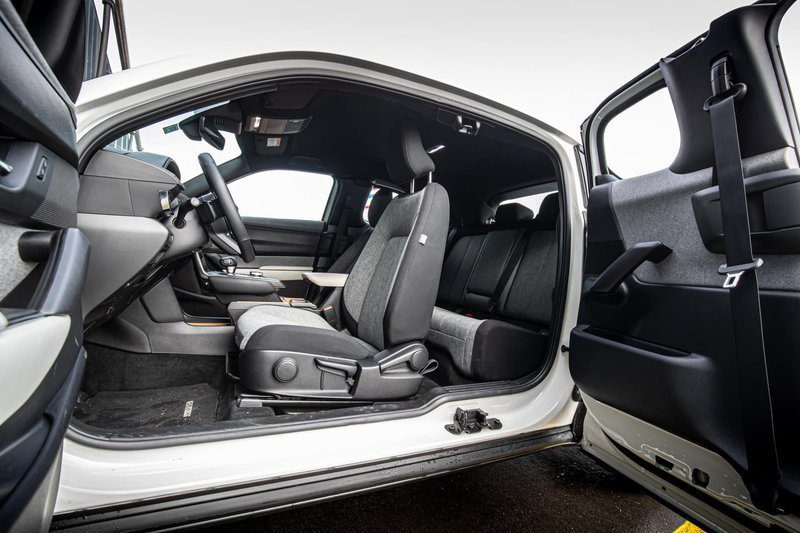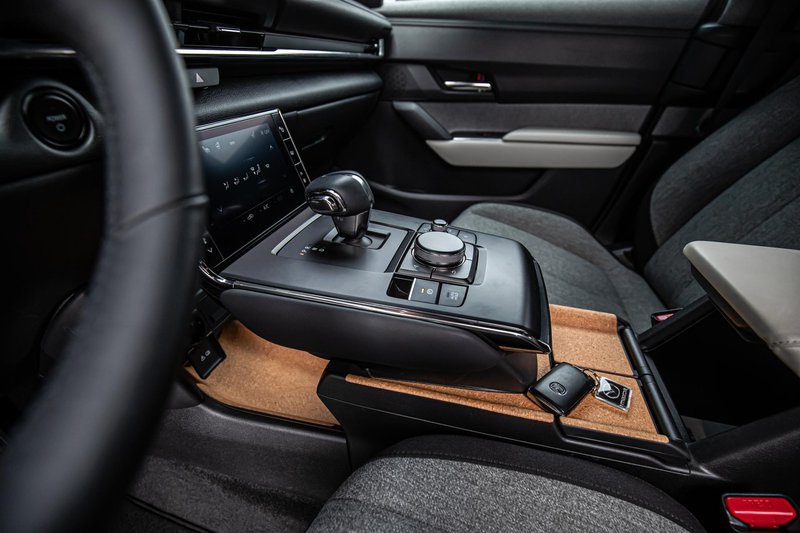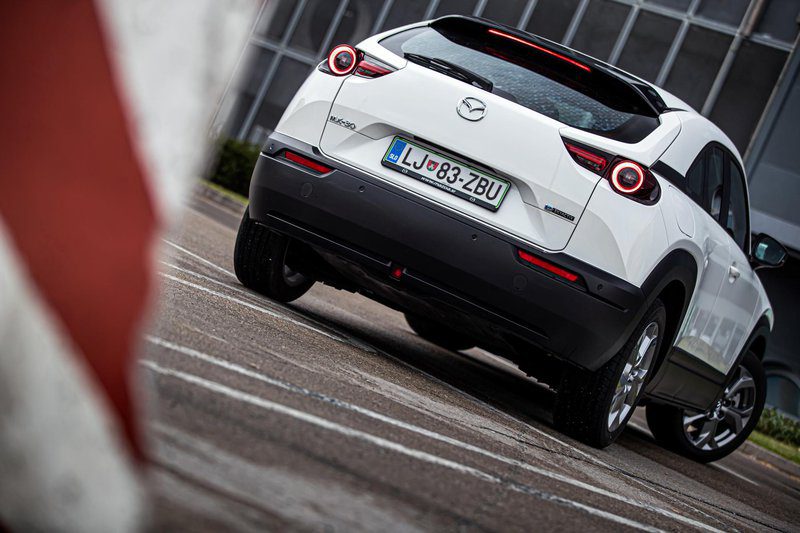
Test: Mazda MX-30 GT Plus (2021) // Electricity - but not for everyone
It would be unfair to look only at the Mazda battery capacity and its range, and then judge only after that. According to these criteria, it will end up somewhere in the tail end of the electrically driven models, but if we look at it more broadly, the truth is actually quite different. And it's not just about the principle that each car is for its customers. Although this is also true.
Mazda's ambivalence toward electrification dates back to the 1970 Tokyo Motor Show. where she presented the EX-005 electric car concept. - at that time he completely turned into a dislike for electric motors, since engineers, however, increase the efficiency of the internal combustion engine with the most innovative approaches. And even shortly thereafter, it looked like Mazda might even be ditching the electric future, but it just had to respond to the growing electric mobility.
First, with a conventional platform, so not one that would be designed specifically for electric vehicles. - also because X is on behalf of the troika, only a slightly different combination of letters. While it's obvious that it belongs to Mazda's SUV family, the MX-30 clearly makes its difference with some design cues. Of course, the Mazda engineers who are so fond of rear-hinged doors that open backwards are part of that difference. But especially in tight parking spaces, they are impractical as they require quite a lot of logistical combinatorics, flexibility and avoidance on the part of the driver and maybe even the back seat passenger.

Much more pleased with the difference when it comes to the atmosphere. Recycled materials are used, even vegan leather, as well as a large amount of cork on the center console. - as a kind of tribute to the history of Mazda, which in 1920 under the name Toyo Cork Kogyo began with the production of cork. The passenger compartment works very nicely, the materials are of exceptional quality and the workmanship is of a very high standard. Just like a Mazda should.
The cabin has two very moderately large screens by modern standards - one at the top of the center console (not sensitive to touch, and rightly so), and the other at the bottom, and only serves to control the air conditioning, so I still wonder why this is even so . Because some commands are also repeated on classic switches that can take on the role of almost everyone. So he probably intends to confirm the electrification of this car. However, the MX-30 has retained the classics in the dashboard instruments.
Sit well. The steering wheel easily finds an excellent position and has ample room in all directions. It is true, however, that the back bench is quickly running out of space. For older passengers, it will be difficult to find legroom for a taller driver, and for almost everyone it will quickly begin to run out overhead. And at the back, because of the bulky pillars that open along with the tailgate and are also fastened with seat belts, visibility from the outside is also quite limited, the impression may even be a little claustrophobic. This only confirms the () urban utility value of the MX-30th However, it is true that luggage space can take more than just a purchase.

Moreover, the empty space under the Mazda has characterized the bonnet for so long. This gap looks ridiculous when you look at the small electric motor and all the accessories. This is not only due to the fact that the MX-30 was built on a classic platform for models with internal combustion engines, but also because the MX-30 will also receive a rotary Wankel engine.Which will serve as a range extender, hence for generating electricity. Now, at a fairly modest distance, the MX-30 is, of course, very much appreciated.
Here's the math range of the MX-30 is pretty straightforward. With a battery capacity of 35 kilowatt-hours and an average consumption of 18 to 19 kilowatt-hours per 100 kilometers with moderate driving, the MX-30 will cover approximately 185 kilometers. For such a range, of course, you should avoid the highway or, if you are already turning onto it, do not go faster than 120 kilometers per hour, otherwise the available range will begin to land faster than the fresh snow at the end of April.

But the fact is also that the 107 kW electric motor is very decently capable of exemplary acceleration (it only takes 10 seconds from zero to 100 kilometers per hour), and above all that the MX-30 behaves in accordance with all high standards. while driving. apply to Mazda. The precise and responsive steering always provides excellent feedback, The MX-30 turns willingly, the chassis is comfortable, although the wheels on short bumps are difficult to return to their original position, as they hit the ground a little, but I attribute this mainly to the heavy weight.
The ride is also comfortable due to the soundproofing of the interior, and in this respect the MX-30 fully meets all the criteria for a car not intended only for (country) roads. Once a range extender is available ... Until then, there remains an example of boutique electrification that will act as (at best) another car in the house and at a reasonable price.
Mazda MX-30 GT Plus (2021)
Basic data
| Sales: | Mazda Motor Slovenia Ltd. |
|---|---|
| Test model cost: | 35.290 € |
| Base model price with discounts: | 35.290 € |
| Test model price discount: | 35.290 € |
| Power: | 105kW (143 KM) |
| Acceleration (0-100 km / h): | 9,7 with |
| Maximum speed: | 140 km / h |
| Mixed flow ECE: | 19 kW / 100 km / 100 km |
Cost (up to 100.000 km or five years)
Technical information
| engine: | electric motor - maximum power 105 kW (143 hp) - constant power np - maximum torque 265 Nm. |
|---|---|
| Battery: | Li-ion-35,5 kWh |
| Energy transfer: | the engine drives the front wheels - a direct transmission. |
| Capacity: | top speed 140 km/h - 0-100 km/h acceleration 9,7 s - power consumption (WLTP) 19 kWh / 100 km - electric range (WLTP) 200 km - battery charging time np |
| Mass: | empty vehicle 1.645 kg - permissible gross weight 2.108 kg. |
| External dimensions: | length 4.395 mm - width 1.848 mm - height 1.555 mm - wheelbase 2.655 mm |
| Box: | 311-1.146 l |
We praise and reproach
quality of materials and workmanship
driving performance
comfort
uncomfortable tailgate
limited space on the back bench
